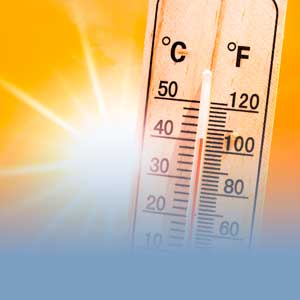Small businesses need to stay on top of their costs to stay competitive. One of the best ways to minimize spending is to find ways to cut energy-related expenses.
The National Federation of Independent Business reports that energy costs are among the top three expenditures for more than one third of small businesses. In fact, small businesses spend a total of $60 billion across the U.S. annually, according to Energy Star. Every building, office setup, or work site has its own unique set of energy challenges.
While putting in solar panels or upgrading your heating, ventilation and cooling (HVAC) system might seem farfetched or cost prohibitive, there are other ways small businesses can limit their energy consumption and save money. From small things that can be done on a daily basis to regular maintenance of equipment, there’s almost always ways to improve.

Small efforts = Big savings
You’ve probably read about them before, but there is real savings in turning off light bulbs and other energy-using equipment when leaving for the night. Closing the shades prevent sunlight from heating up the office in summer and minimizes cold drafts in winter. Programming the thermostat to be 7 to 10 degrees warmer in summer and 7 to 10 degrees cooler in winter during off-hours can save 10% in HVAC costs.
Programming the thermostat to be 7 to 10 degrees warmer in summer and 7 to 10 degrees cooler in winter during off-hours can save 10% in HVAC costs.
Low cost savings
Small investments like replacing incandescent light bulbs with energy-efficient lightbulbs (halogen bulbs, compact fluorescent lamps and light emitting diodes) can go a long way. These alternatives typically use 75-80% less energy and can last up to 25 times longer. Ceiling fans are another smart energy investment, as circulating air can assist HVAC systems in spreading conditioned air.
Maintaining high-energy equipment
Simple maintenance like replacing HVAC air filters every three months can be done by staff. However, an annual inspection by a licensed technician can treat an entire HVAC system to make sure it’s operating at peak efficiency. Technicians will check electrical connections for looseness or damage, make sure the lubricating oil in a compressor’s crankcase heater is at level and clean, keep surfaces of cooling coils clean and ensure proper refrigerant levels are kept.
An annual inspection by a licensed technician can treat an entire HVAC system to make sure it’s operating at peak efficiency.
Before making decisions about ways to conserve energy, here are a few steps to consider:
- Start with an energy audit: Get a firm grasp of what your business spends on electricity, water and heating/cooling by tracking usage for several months.
- Uncover challenges and find energy solutions: Sometimes there’s an obvious problem, like an inefficient heating, ventilation and cooling (HVAC) system in an extreme climate. Oftentimes, however, there are lots of small challenges that add up throughout the course of a year – leaving lights on after hours or a faucet leak in the sink.
- Seek peer and expert guidance: See what other small businesses in your area are doing to save energy. And don’t be afraid to talk with the local utility or other energy experts to find out steps toward a more a green facility.
- Set realistic energy goals: Based on your findings and possible solutions, create goals that can be achieved in a year.
- Get your employees on board: Have an open conversation with employees about your energy goals and ways to accomplish them.
- Track your progress: Follow through on the goals your organization established and see if you’re moving in the right direction. Don’t be discouraged if you miss your target, keep at it!





